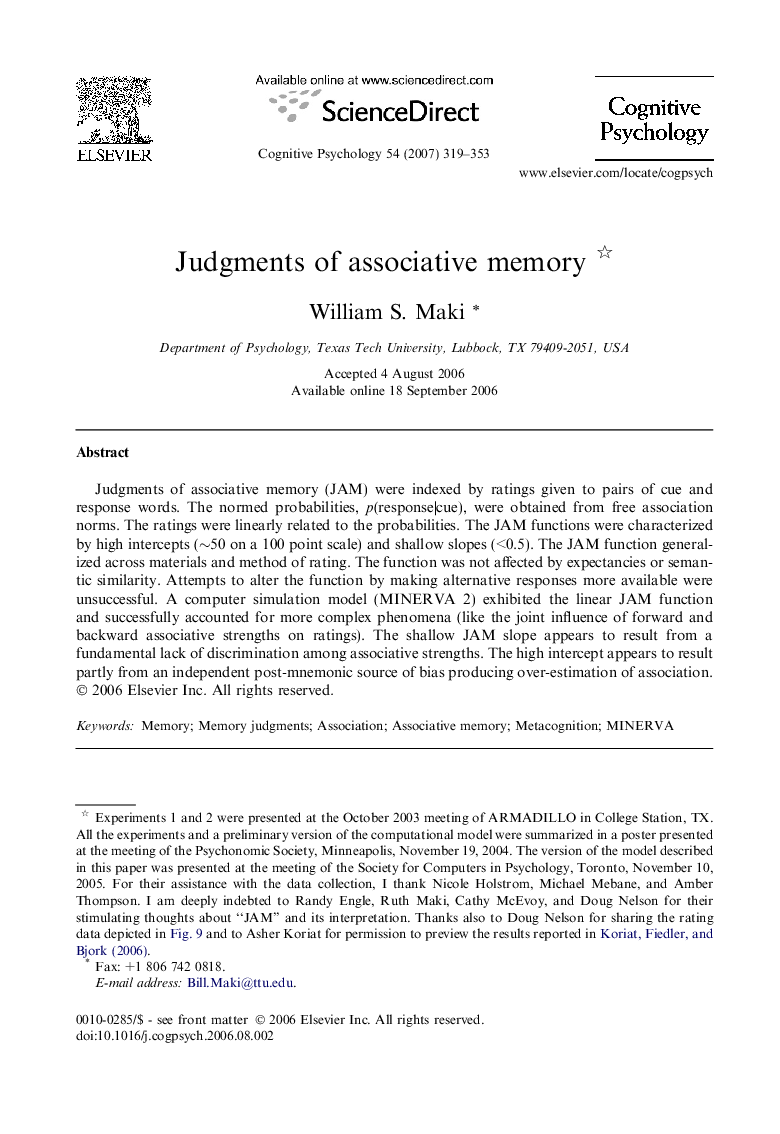| Article ID | Journal | Published Year | Pages | File Type |
|---|---|---|---|---|
| 917118 | Cognitive Psychology | 2007 | 35 Pages |
Judgments of associative memory (JAM) were indexed by ratings given to pairs of cue and response words. The normed probabilities, p(response|cue), were obtained from free association norms. The ratings were linearly related to the probabilities. The JAM functions were characterized by high intercepts (∼50 on a 100 point scale) and shallow slopes (<0.5). The JAM function generalized across materials and method of rating. The function was not affected by expectancies or semantic similarity. Attempts to alter the function by making alternative responses more available were unsuccessful. A computer simulation model (MINERVA 2) exhibited the linear JAM function and successfully accounted for more complex phenomena (like the joint influence of forward and backward associative strengths on ratings). The shallow JAM slope appears to result from a fundamental lack of discrimination among associative strengths. The high intercept appears to result partly from an independent post-mnemonic source of bias producing over-estimation of association.
